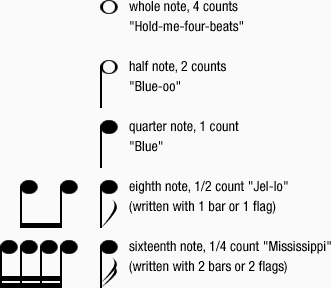
NOTE READING
First Position Study Sheets You Can Take With You Anywhere! Click here to print out the Note-Reading 1st Position Study Key PDF file for Violin.
Click here to print out a Flash Cards Note-Reading PDF file for Violin D & A Strings.
Click here to print out a Flash Cards Note-Reading PDF file for Violin G & E Strings.
Click here to print out a Practice Sheet PDF file for beginning counting exercises.
Intermediate & Advanced Students, Click here to quiz yourself...make sure to pay attention to the KEY SIGNATURE! =-)
To figure out what finger plays what note, use this guide. For instance, Open A is on the second space from the bottom of the staff, while First Finger on E is on the top line. Beyond the "staff" (the five lines that are joined) are notes such as Open G, which is just below two lines extended from the bottom of the staff (the smaller lines above and below the staff are called "ledger lines"). The note D can also be played with 4th finger on the G string, the note A can also be played with 4th finger on the D string, etc. The lines of the staff from the bottom line up (not the extensions) are called "E, G, B, D and F" or "Every Good Bob Deserves Fudge" to help you memorize. The spaces of the staff from the bottom space up are called "F, A, C, E" or "FACE".

Basic note names and values below. Eighth notes and smaller when alone are written with "flags", or when multiple are side by side, they are usually connected with "bars". Adding a "dot" just off to the right of the note head adds value to the note by 1/2 the note value. For instance, when adding a dot to a half note, its value becomes 2 counts plus half of 2 counts, or 1, so the new value of the dotted half note would be 3 counts. Dotting a quarter note makes the new value 1 count plus 1/2, or 1 1/2 counts and so on.
